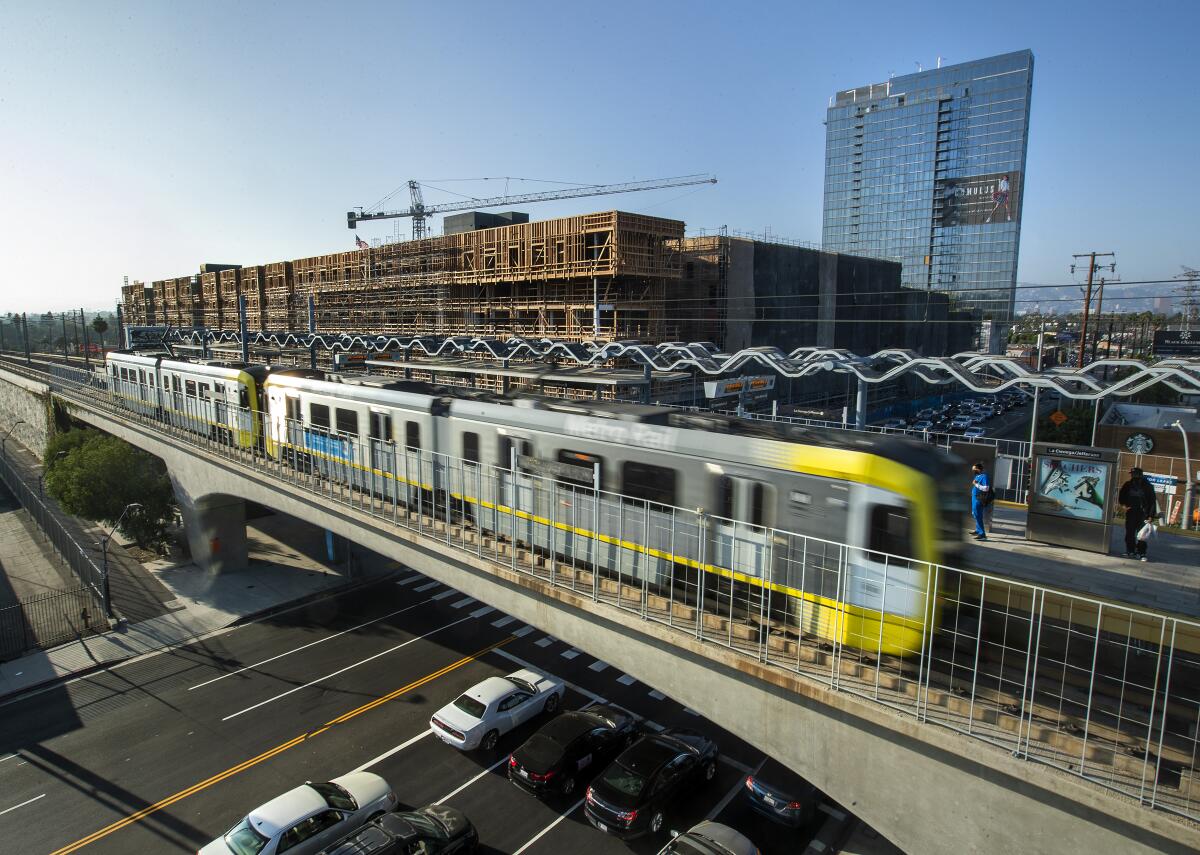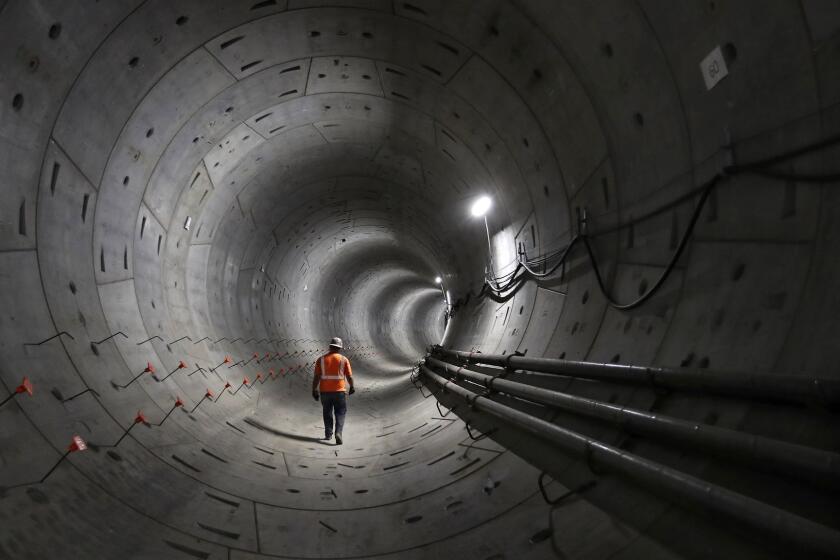Rail line in southeast L.A. County approved as leaders seek to speed up construction

Transportation officials gave the green light this week to a 19.3-mile light rail line that would serve largely working-class Latino communities in southeast Los Angeles County, and agreed to look for ways to speed up the project slated for completion in 2043.
The line runs from Artesia northwest to Union Station, cutting through the cities of Cerritos, Bellflower, Paramount, Downey, South Gate, Cudahy, Bell, Huntington Park and Vernon. It would provide key connections to other lines, helping build out a rail system decades in the making.
But with costs ballooning to $8.5 billion — more than double the original estimate — the Metropolitan Transportation Authority decided to construct the project in two segments.
Local leaders have complained about the long wait for rail service.
“These are communities that need and deserve a project like this,” county Supervisor Janice Hahn, a Metro board member, said at a news conference on Friday. The poverty rate in the region is 47% and about 1 in 5 residents don’t have access to a car, according to Metro.
“I cannot help but be a little frustrated at how long it’s taken us to get to this point,” said Hahn, who represents areas of the southeast corridor. “These communities are in such high need, but I’ve seen other lines get prioritized.”
The rail line was part of Los Angeles Mayor Eric Garcetti’s plan to build 28 transit projects by the 2028 Olympics.
The first 14.8-mile phase runs from Artesia along a former Pacific Electric right of way to Slauson Avenue and Long Beach Boulevard, where it would connect with the A (formerly Blue) line. Groundbreaking for the $4.9-billion phase is slated for next year and completion about 10 years later.
The second phase heads north 4.5 miles from the Slauson depot to Union Station and is set to be completed by 2043. About half of the line is planned to run underground through Little Tokyo, where Metro construction disrupted businesses for years and tunneling is driving up costs.
On Thursday, led by Hahn, the Metro board unanimously approved a plan that will look at cheaper alternatives to tunneling that could accelerate construction for the second phase. In an hours-long public comment period, dozens of elected officials representing the communities along the rail line pleaded with the board to speed up the timeline.
Los Angeles County transportation officials on Thursday chose two possible routes through downtown for a light-rail line to Artesia that could attract tens of thousands of riders a day.
“We have been waiting too long,” said Maria Davila, a South Gate City Council member for 19 years. “We don’t have any other source of transportation in the corridor except for buses and the 710 [Freeway], which is always crowded.”
Davila said the project has been talked about for two decades. She is a founding board member of Eco-Rapid Transit, a joint powers authority created by southeast communities two decades ago to get a rail line built. “Hopefully I will get to see it in my lifetime.”
The rail line was a cornerstone of Measure M, a $120-billion half-cent sales tax approved by voters in 2016, which gained widespread support among elected officials in the region. Along with Measure R, approved in 2008, the tax fueled a rail construction boom.
Several changes to the original 2017 project drove up costs, including adding 2.3 miles of underground tunneling, aerial bridges over intersections, the relocation of utility lines and a transfer station to the C (formerly Green) Line at the 105 Freeway.
Metro plans to tap $3.1 billion in federal funds and an additional $850 million in state funds for the first leg of the rail line.
More to Read
Sign up for Essential California
The most important California stories and recommendations in your inbox every morning.
You may occasionally receive promotional content from the Los Angeles Times.












